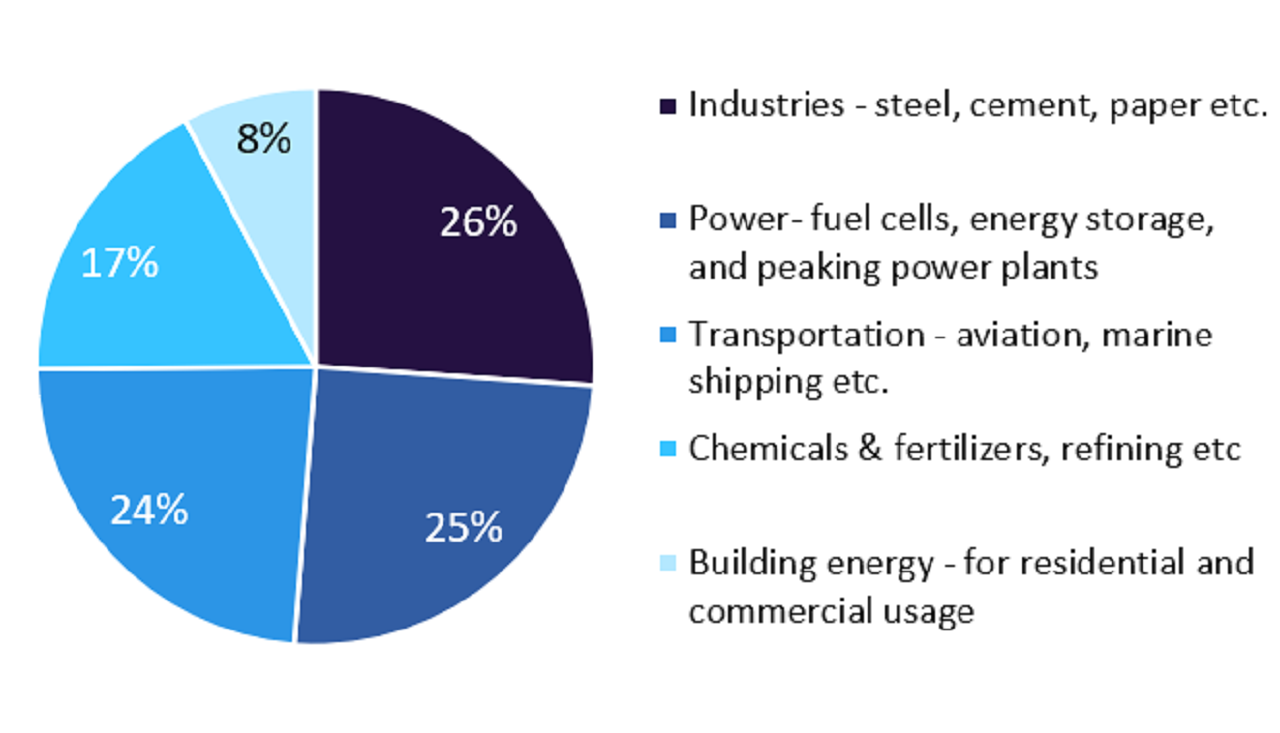The energy transition has gained global momentum due to increased awareness regarding the impact of emissions from fossil fuels on climate change.
Many governments are emphasising the need to pursue cleaner energy sources as alternatives to mitigate carbon emissions.
Hydrogen has gained traction in recent years as an alternative form of energy. It is light, storable, and does not produce direct carbon emissions or greenhouse gases when combusted.
Low-carbon hydrogen – having a low to net-zero carbon footprint – can help in achieving global decarbonisation targets in the energy sector, as well as other difficult-to-decarbonise industries such as construction.
Several major economies such as the US and the EU have laid out hydrogen roadmaps as the energy transition gains precedence in the global polity and percolates into the corporate boardrooms of energy companies.
See Also:
During November-December 2023, GlobalData, a leading data and analytics company, conducted a poll to try and gauge which sector is likely to be the major consumer of low-carbon hydrogen.
How well do you really know your competitors?
Access the most comprehensive Company Profiles on the market, powered by GlobalData. Save hours of research. Gain competitive edge.

Thank you!
Your download email will arrive shortly
Not ready to buy yet? Download a free sample
We are confident about the unique quality of our Company Profiles. However, we want you to make the most beneficial decision for your business, so we offer a free sample that you can download by submitting the below form
By GlobalDataThe poll responses were not at all unanimous and depicted a range of inclinations across the potential sectors.
The top three sets of responses yielded an almost identical distribution, representing approximately one-fourth of the total respondents each.
This indicates equal importance across these three sectors, with each having the potential to be the major market for low-carbon hydrogen consumption.
About 26% of the respondents said that industries such as steel, cement, and paper production will be the major consumers of low-carbon hydrogen. These are some of the core industries on which the global economy is structured and consume a vast amount of energy to produce their respective end-products.
These industries also have a significant carbon footprint. The use of hydrogen as a fuel in the critical processes of these industries will have a wide-ranging impact on global carbon emissions.
Around a quarter of the respondents felt that the power sector would be the major consumer of low-carbon hydrogen.
The power sector is transitioning towards renewable energy sources, which are prone to periods of reduced intensity. In this case, hydrogen can act as a form of energy storage medium and can be used to supplement the deficit power.
Hydrogen-powered fuel cells can be used to convert hydrogen energy into power. Hydrogen-based power generation can replace the role of traditional peaking power plants while drastically lowering carbon emissions.
Meanwhile, a little less than one-quarter of the respondents suggested that transportation would be the major consumer of low-carbon hydrogen.
Hydrogen-powered fuel cell electric vehicles have seen acceptance in the light vehicles market, although this segment is currently more disrupted by battery-powered electric vehicles.
The true potential for hydrogen as a transportation fuel lies in shipping, aviation, trucking, and heavy-lifting equipment. Guidelines by the International Maritime Organization to decarbonise the shipping sector could work in favour of fuels such as low-carbon hydrogen.
About one-sixth of the respondents indicated that the downstream sectors of refining, chemicals, and fertilisers could together be the major consumer of low-carbon hydrogen.
Refining and petrochemicals have been the largest consumers of hydrogen produced conventionally. The fuel is used for hydrotreatment and hydrocracking processes in refineries within the sectors.
Moreover, hydrogen is a key feedstock in the petrochemicals sector, where most of its demand comes from the manufacture of two important chemical compounds: ammonia and methanol.
Low-carbon hydrogen could find long-term acceptance as a fuel, as well as feedstock, in these sectors.
Only 8% of the respondents considered the residential and commercial sectors to become the major consumers of low-carbon hydrogen.
In the short to medium term, hydrogen could be blended in low percentages with gas to assist heating demand. Over time, hydrogen can potentially replace natural gas as a fuel in heating applications.









